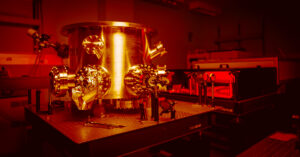The Construction Industry Meets Technology Disruption – Finally
Construction is a $12 Trillion industry, accounting for almost 13% of the Global GDP. Construction and buildings are also responsible for 38% of global emissions, producing ~25%-30% of all waste in Europe. While construction incumbents have historically invested very little in new technologies, following a recent spike in VC investment, it appears the sector is on the verge of major disruptive changes.
Attractiveness
By the end of 2018, VC investment into construction tech reached $6 billion, up from just $352 million in 2016. VC Investment this year has already exceeded $4 billion as investors are noticing start-ups addressing the sectors biggest pain points and their enormous potential to offset costs.
Construction outputs are predicted to grow 85% by 2030. Concurrently, the construction workforce and productivity are declining. To meet this labor gap, many firms are looking to automation and robotics to make the current workforce more efficient and to take over monotonous or labour-intensive tasks. Additionally, technology is attracting a younger workforce into construction. The transition to automation has many drawing a parallel to manufacturing, a similarly labor-intensive, fragmented and multi-faceted industry which has become one of the leading sectors to adopt automation.
Over 90% of big construction projects experience cost overruns and scheduling delays which average 20 months per project, costing owners and contractors millions as a result. Management software and monitoring hardware are emerging to increase efficiency with logistics, workforce scheduling and overall project planning.
The construction industry is traditionally risk-adverse, which has previously held back innovation and digitization. However, governments are starting to use digitization clauses in public contracts to incentivise innovation or set targets. The German Federal Ministry of Transport and Digital Infrastructure will make the use of Building Information Modeling (BIM) compulsory on all public construction contracts starting in 2020. Similarly, the government of Dubai has set a 25% target for all new buildings to be built via Additive Manufacturing (AM) by 2030.
Business models
The construction industry is fragmented, with small players subcontracted to do specific roles. The majority of start-ups are seeking to align with this structure offering service models to lease hardware and software vertically along the value chain, but also across multiple sectors in order to spread market risk. Technology giant Katerra however, is not. Founded in 2015 and boosted by $978 million investments from Softbank, Vision Fund, RiverPark Ventures and Four Score Capital in its 2018 Series D funding rounds, Katerra offers end-to-end construction services integrating construction tech at every stage. Benefiting from economies of scale, turnkey solutions, off-site construction and better communications, Katerra have the potential to transform construction on a huge scale.
Robotics in construction
Robotics and automation industries are predicted to be valued at $44.8 billion by 2024. Warehouse automation has boomed in the last several years, with companies like Fetch Robotics raising $46 million in its Series C round this year. Currently, the electronic, warehouse and automotive industries are the main users for robotics, but many of these innovations can be applied to construction.
In construction, robotics, cobots (collaborative robots), exoskelletons and AM robotic arms are performing monotonous tasks, reducing manual labor and can autonomously build structures. However, robotics development requires significant capital investment while the construction sector operates on very low profit margins. As such, investment into technology is mostly from VC funds and into the robotics technology, which can be horizontally integrated across multiple sectors. For example, SuitX develops mechanical exoskeletons to support construction workers carrying out labor intensive and tiring tasks and sell medical exoskeletons to the medical industry.
The venture arm of construction equipment multinational Caterpillar, Caterpillar Ventures is an example of incumbents starting to embrace innovation. Caterpillar Ventures has made a number of investments into robotics startups since 2016 including exo-skeleton company Sarcos Robotics, autonomous logistics vehicle developer ClearPath Roboticsv, as well as bricklaying robot developer FBR in a post-IPO equity round.
We spoke to Minerva Pillai, Co-Founder of SuitX, who said the fragmented nature of the construction industry slows robotics’ adoption. “It’s desegregated, where the companies who need it SuitX’s technology the most, the sub-contractors, have the least power to invest in its implementation. We have found that mostly the larger construction companies, who also value innovation, have started successful implementation,” she added. Exoskeletons can get into places where robots cannot and for the construction industry where changes occur in real time removing a person from the loop will be difficult. As such it is an industry where exoskeleton use shows promise.
Robotics as a Service (RaaS)
To avoid high upfront capital expenditures, many are offering Robotics as a Service (RaaS), this model is affordable and aligns with industry practice to contract labor. For example, Sarcos Robotics will lease their microelectromechanical exoskeleton to companies for a minimum of one year, providing all servicing, repair, support and operational optimization for a monthly fee. We spoke to Ben Wolff, chairman and CEO of Sarcos Robotics, who said, “This business model is not only affordable for our customers, but technology and obsolescence risks are eliminated, further incentivising early adopters.”
However; many of these technologies have a steep learning curve to use. As a result, many start-ups are spending considerable time educating initial clients and seeking funds for marketing. Therefore, entrepreneurs are developing products alongside workers to ensure they are intuitive and closely align with current working practices. For example, Sarcos Robotics have partnered with construction and engineering giant, Bechtel, to align with construction practices in oil and gas.
Maintenance
Construction companies expend valuable staff time conducting onsite inspections, but with an influx of data from mobile devices, sensors, scanners, and even autonomous drones and robots, on-site monitoring capabilities are getting smarter, more accurate and increasingly automated. Maintenance software is usually sold as SaaS with corporates aggregating platforms to offer solutions packages. Many are horizontally embedded across industries for rapid penetration in multiple markets.
Task management software is gaining momentum
For example, Autodesk offers software subscription packages to multiple industries including manufacturing, product design, architecture and construction. In October 2018, it acquired workflow software developer, PlanGrid for $875 million and project management software developer, Building Connected for $275 million in order to aid in the digitization and automation of construction workflows. Autodesk has continued to acquire start-ups, aggregating and standardizing platforms. This trend is forcing standardisation from suppliers, who must be more transparent about their pricing and offerings. Standardization will be increasingly important for interpretation and ease of use, as multiple technologies producing different data sets adds complexity.
Drones, boom and bust?
Unmanned Arial Vehicles (UAVs) or drones, are aiding contractors to accurately monitor and protect construction sites. Between 2012 and June 2019, VC investment reached $2.6 billion This investment has percolated into construction with industry leader PrecisionHawk acquiring construction UAV companies, Uplift Data Partners and Hazon Solutions in 2018. However, following the decline of established companies like Airware Inc and CyPhy Works, investment has shifted to fewer, more selective, later stage investments. For example, UAV medicine delivery services, Zipline raised $190 million in its Series C round which represents over half of all UAV investment this year.
We spoke to David Morczinek, CEO of Airworks Solutions, a company developing UAV mapping software which transforms aerial images into CAD maps and see this boom and bust as an advantage. David said, “There is a misalignment that exists in this industry, construction companies can’t do much with fancy pictures, Early investments were mostly in hardware, but investment is now shifting to UAV software companies who can add value to UAV data. Airworks software takes a UAV aerial image valued at ~$600 and using AI and machine learning and transform it into a ~$6000 CAD image engineers and architects can really use.”
Looking into the future, one of the key UAV capabilities being developed and incentivised by federal grants is integration into an Unmanned Traffic Management (UTM) system. Like airport traffic control, UTM will ensure multiple drones can be in one airspace without collision or interference. Integration into this system is where aggregation and standardisation will pay off. We spoke to Illy Gruber, VP of autonomous UAV developer, Percepto who said, “UTM integration is something every drone manufacturer will have to be able to support. Even now our biggest barrier is regulation, especially as our drones are autonomous.”
Competition
The construction industry suffers from a vicious cycle of innovation underinvestment, where issues arising from inefficiencies are costing contractors any money which could be invested into improving such efficiencies. The industry is highly fragmented, where less than 5% of builders work for construction companies which employ over 10,000 workers. Additionally, contractors are pricing project bids too low for long-term projects and suffering from ‘legacy contracts’ where materials have risen in price, negatively impacting profit margins. It is therefore unsurprising that, construction companies invest less than 1% of revenue in new technologies in the U.S., which is lower than every other major industry.
VC boost for construction tech
Recent VC investments have provided a boost for construction tech but without corporate collaborative development, innovators risk technological obsolescence where products develop out of sync with the market. Many construction-centric venture funds have emerged over the past few years, including CEMEX Ventures and Brick and Mortar Ventures. In August this year, Brick and Mortar Ventures raised $97 million for construction-related hardware and software innovations. This money has come from big corporat players across the value chain including materials giant, Cemex, flooring suppliers, Ardex, manufacturing company, Hilti, software firm, Autodesk and construction firm, Obayashi Corporation. Following the closing of its first fund in January 2018, Brick and Mortar Ventures have made 34 investments including autonomous construction vehicle start up, Safe AI, Building Connected (acquired by Autodesk) and AM start up, Branch Technology. We spoke to Advocacy Director, John McCabe of Branch Technology who said, “following a $7.5 million investment round, which included Brick and Mortar Ventures, we have been able to execute on the capabilities of our patented Cellular Fabrication process. We recently completed an advanced design and manufacturing centre, which has allowed us to offer increasingly complex construction solutions for customers at all scales.”
Construction companies and innovation
Caterpillar are one of the front runners in corporate strategic investment with a corporate VC arm, Caterpillar Ventures. It has invested $2 billion annually in their R&D program. Cement giant, Lafarge Holcim has been running its LH Accelerator for a number of years now. Construction firm and building envelope specialists, FK Group has just launched FK Accelerate, a global start-up search to drive innovation in the construction sector.
Construction software corporates are much more active in investment. Autodesk is a good example as is Bentley Systems, which acquired 4D construction modeling firm Synchro Software last year and continues to invest in its iTwin Services for leveraging cloud-based digital twins from design into construction and throughout operations. However, investment into hardware is looking encouraging. We spoke to Ben Wolff, CEO of Sarcos Robotics, who said “we are seeing more and more corporates stating their company advantage is going to be technology and are increasingly looking at new tech to enhance their own profitability.” This follows investment from incumbent Caterpillar and Caterpillar Ventures in both Sarcos Robotics’ Series A and B rounds. Indeed, last week building envelope construction services provider FK Group launched its FK Accelerate, accelerator looking for innovative start-ups in robotics, UAVs and virtual inspections.
However, we spoke to Noah Eckhouse Senior Vice President of construction software corporate Bentley Systems, who said, “construction companies are often painted with a broad brush when it comes to innovation, there is huge innovation from the oil and gas sector and governments are fostering innovation with public contracts. What we are observing is that the corporates that are digitizing have a significant competitive advantage and so are continuing to adopt innovation.” We also spoke to Michael Young, Director at Caterpillar Ventures, the corporate VC arm of construction equipment giant Caterpillar, who said “Oil and gas is the most progressive construction market we are in; they are still hesitant but for good reason. Innovation in this space takes huge capital investment, these plants have to operate 24/7 and there is a real threat to human life if it goes wrong.”
Investment continues to gain momentum in both construction robotics and maintenance start–ups. Last week, automated construction vehicle start-up, Built Robotics received $33 million in a series A round having raised $15 million in 2017. While, developer of field management software for the construction industry, Fieldwire has raised $33.5 million in a Series C round. The round was led by Menlo Ventures and Brick and Mortar Ventures, while field management software developer Procore is currently working with Goldman Sachs Group to lead a US IPO that could value the company at more than $4 billion.
The industry remains fragmented and under a vicious cycle of costly overruns and reworks, so low margins and little investment for innovation. Emerging new end-to-end business models offer promise but remain under the same constraints as incumbents. What is clear is that construction firms will need to innovate either out of choice or necessity and those that choose the latter will suffer from significant competitive disadvantage.
For more insight into the construction industry and its sustainable evolution, join us for Cleantech Forum San Francisco on 27-29 January.





